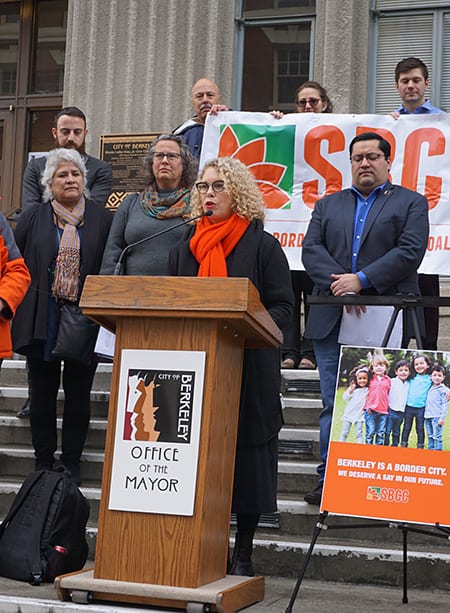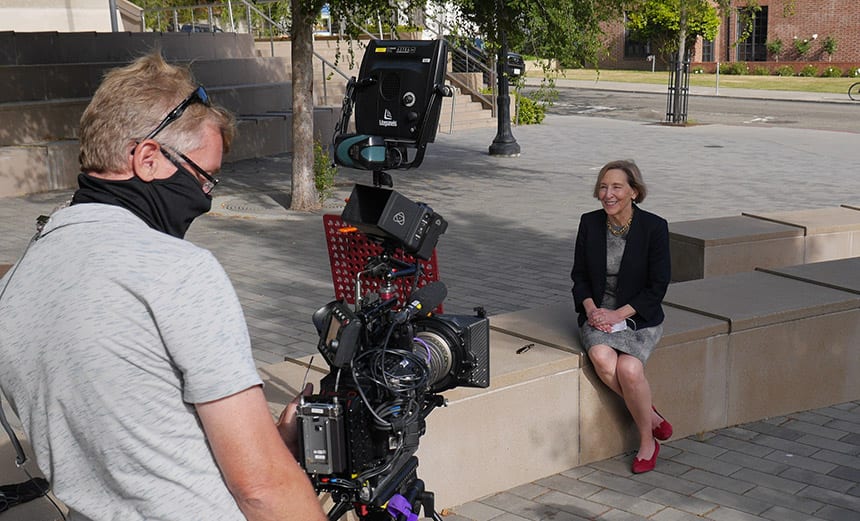By Sarah Weld

After steering Berkeley Law’s thriving clinical program towards certain expansion, Death Penalty Clinic Director Elisabeth Semel has passed the reins to Laurel E. Fletcher, co-director of the International Human Rights Law Clinic.
The transition arrives during a time of significant growth. The program welcomes its biggest class of in-house students this fall, added a new in-house clinic last year, and just completed a yearlong process of laying the groundwork to expand over the next decade.
Fletcher, a Berkeley Law faculty member since 1998, wants to make sure students can access exceptional clinical experiences in a remote environment.
“We need to adapt clinical legal education in these current crises,” she says. “We are operating in the midst of a public health crisis with COVID-19 and a racial justice reckoning that has recentered a conversation around systemic racism and anti-Black racism, not just with regard to the police but across our social institutions.”
The clinical program houses 14 clinics — six in-house clinics and eight community-based clinics led by faculty members and practitioners with deep expertise in their fields of specialization. Classroom seminars offer students a foundation in law and practice, and hands-on casework builds critical lawyering skills while serving disenfranchised individuals and communities.
With the addition of the New Business Community Law Clinic last year, seven new in-house clinic teaching staff this year, and plans drafted to add new clinics, the program is accelerating toward being able to provide a clinical experience for every law student who wants one. Right now, about half of Berkeley Law J.D. students take a clinic at some point during their three years.
“We’re hitting on all cylinders in terms of the institution’s investment in clinical education. Our full integration into the curriculum, the range and depth of offerings, and the high enrollments are mutually reinforcing,” Fletcher says.
Connecting theory to practice
For students looking to combine their passion for social justice with on-the-ground legal work, Berkeley Law’s clinics have long provided the perfect fit, offering students an experience that traditional courses do not — like writing legal briefs, counseling clients and appearing on their behalf in court, and testifying before state legislatures.
“We have a responsibility to ensure that students are as prepared as possible to practice law. That’s what clinic classes can do that doctrinal classes cannot,” says Semel, who joined the Berkeley Law faculty in 2001 as the founding director of the Death Penalty Clinic. “There is a distinction between learning legal theory and putting theory into practice. Our traditional classroom faculty embrace the need to breathe life into legal theory. But when students take on the responsibility of representing clients, they connect the dots to practice and problem-solving.”

Clinics also expose students to what Semel calls “a lifelong sense of responsibility to service.” She adds, “Many students chose to come here because they want to follow Congressman John Lewis’s call to ‘make good trouble, necessary trouble.’ Our clinics are part of that draw.”
Fletcher agrees, noting that a core part of being a lawyer is providing service to the broader community and those who need it most.
“We have students who come to Berkeley because they are public-spirited and social justice–oriented,” she says. “Regardless of the area of law in which our graduates practice when they leave Berkeley Law, they bring the Berkeley ethos of public service to their corner of the profession.”
Semel’s three years leading the clinical program coincided with Dean Erwin Chemerinsky’s arrival. Under her watch, in-house clinical faculty won greater job security and status, which Semel attributes to Chemerinsky’s commitment to clinical education. At UC Irvine School of Law, which he helped found in 2008, he made taking a clinic a requirement for every incoming student.
“Erwin made the difference,” Semel says. “Coming from an institution where clinical education is co-equal in every respect, where clinical faculty are co-equal in every respect, the norm for him is quality and equity. It has been enormously gratifying to see this evolution taking place.”
The appreciation is mutual. Chemerinsky says, “Lis Semel did a terrific job as director of our clinical program in the last three years. She was a wonderful voice for the clinical program and a great advisor to me on so many matters. I am thrilled that Laurel Fletcher was willing to take on this role. Her extensive experience makes her ideally suited to be our new clinical director.”
Wide reach, high impact
From the Death Penalty Clinic recently obtaining the reversal of an Arizona’s client’s death sentence to the Environmental Law Clinic gaining court victories that curtail the use of toxic chemicals to treat oil spills, the clinics have achieved great success in the past three years.
Sobering research and diligent legislative work by the Policy Advocacy Clinic led to California and Nevada abolishing racially discriminatory fees and fines for youth and their families in the justice system. The East Bay Community Law Center, Alameda County’s largest provider of free legal services, recently pushed the county to extend its eviction ban through the end of this year.
Other highlights include the International Human Rights Law Clinic investigating the murder of Honduran environmental activist Berta Caceres and the Samuelson Law, Technology & Policy Clinic drafting privacy principles — adopted in March — to guide the city of Oakland’s collection, management, and use of residents’ personal information. With the arrival of the pandemic, the New Business Community Law Clinic swung into high gear this spring offering vital support to businesses navigating how to stay open during COVID-19.
Thanks to the clinics’ broad scope of work and topics, students can delve into a wide range of legal areas and generate a trove of memorable experiences. Fletcher explains:
“Our message to students is, ’Whatever your interest, we have a place for you in the clinical program to learn the skills you’ll need to succeed while acting as a change agent for social justice.’ We want our clinical program to be transformative for our students as they transform the world.”